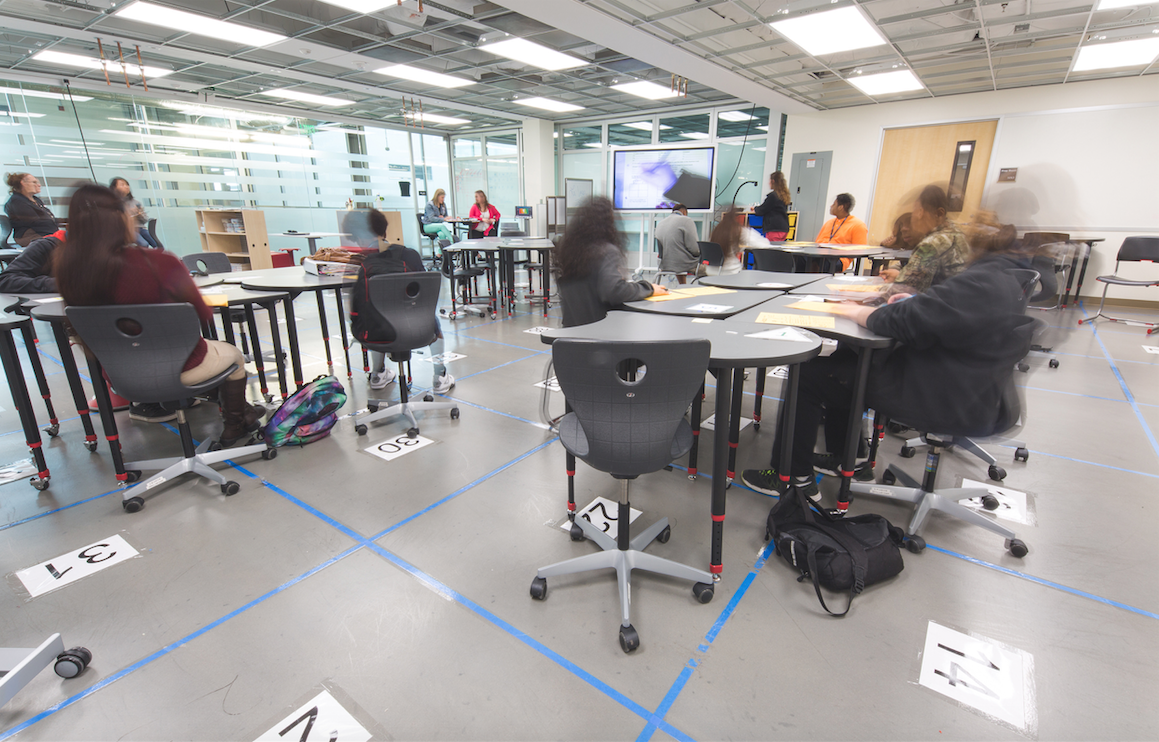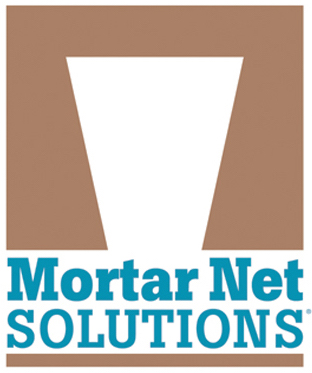At a prototype classroom on the campus of Baylor University, in Waco, Texas, school officials and teachers experiment with new types of furniture, workgroup configurations, projectors, writing boards, and mobile technology to test new teaching methods and classroom layouts.
TOP 100 K-12 SCHOOL ARCHITECTURE FIRMS
Rank, Firm, 2015 Revenue
1. DLR Group $66,300,000
2. Stantec $64,964,601
3. Huckabee $60,544,770
4. PBK $55,230,000
5. Wold Architects and Engineers $26,600,000
6. NAC Architecture $24,647,620
7. HMC Architects $24,031,965
8. Perkins+Will $19,790,000
9. LPA $19,662,221
10. Fanning/Howey Associates $18,915,132
TOP 60 K-12 SCHOOL ENGINEERING FIRMS
Rank, Firm, 2015 Revenue
1. AECOM $50,000,000
2. Jacobs $47,790,000
3. STV $10,618,628
4. KJWW/TTG $9,576,078
5. Wendel $6,321,646
6. Loring Consulting Engineers $6,000,000
7. SSOE Group $5,830,000
8. Dewberry $5,245,499
9. KCI Technologies $5,000,000
10. M/E Engineering $4,688,355
TOP 80 K-12 SCHOOL CONSTRUCTION FIRMS
Rank, Firm, 2015 Revenue
1. Gilbane Building Co. $480,004,000
2. Balfour Beatty US $461,785,038
3. Core Construction Group $421,279,721
4. Turner Construction Co. $404,115,437
5. Skanska USA $214,070,248
6. Kraus-Anderson $203,000,000
7. Shawmut Design and Construction $191,000,000
8. Barton Malow Co. $181,481,875
9. Adolfson & Peterson Construction $168,810,000
10. JE Dunn Construction $157,937,145
K-12 GIANTS SPONSORED BY:
Opened in 2015, the Learning Experience Laboratories (LEx Labs), created by design firm Huckabee, a local educational service center, and Baylor, is a microcosm reflecting nationwide trends.
The lab is a kind of flight simulator where educators experiment in ways that address forces in the corporate world and trends in technology influencing K-12 education. New styles of working—more collaborative and project-based—and mobile technology are changing how people work. The K-12 education sector is responding to those trends.
The need to revamp schools to keep up with the times adds urgency to planning and funding decisions. K-12 construction put in place declined to $12.9 billion in 2015, from $14 billion in 2014, according to School Planning & Management, so school districts have had to upgrade their physical plants with fewer resources.
Educators visiting LEx Labs frequently want to try out new concepts in furniture. Later, they discover that the space promotes the reevaluation of teaching methods. “There’s been a growing trend where the built environment has been influencing professional development,” says Kerri Ranney, AIA, Huckabee’s Director of Learning and Strategic Development. “We now are at a tipping point.”
She admits there is great variability in how quickly schools are changing. “Some clients are willing to jump far ahead in changing the pedagogy and learning environment,” Ranney says. “Others just move a couple of ticks.”
The impact on design of mobile computing devices, movable furniture, team teaching styles, and more collaborative project work means most architects are creating classrooms far different from the ones in which they were educated. When a radical concept arises it helps to visualize what the alternatives could be in a mock environment like LEx Labs.
Design firms must also help educate parents and taxpayers about new learning spaces. Building support for new projects is more important than ever, says Roger Smith, AIA, LEED AP, Principal, BBS Architects & Engineers. “Parents know a lot about their kids’ education. Their expectations are bigger, and they’re more involved,” Smith says.
To generate funding support for major new projects, school districts often mix in amenities that can be used by the whole community. These features include old standbys such as athletic fields, gymnasiums, and auditoriums, but with new twists. KSS Architects designed a combination facility that is best described as an auditorium with a gym built into it for Gottesman RTW Academy, a private school in northern New Jersey.
“They wanted the space to look like an auditorium, not like a gym,” says Merilee Meacock, AIA, LEED AP, Partner, KSS Architects. “A higher-end aesthetic was important. They wanted to display their identity such that performance was a higher priority than athletics.” An accent wall/proscenium/cloud ceiling creates a room-within-a-room effect. Resilient and durable materials ensured that the space would hold up to gym use.
The Jewish day school uses the space for high-holiday services, so the room had to look the part. This adaption helped generate financial support for the newly constructed school.
KSS’s design also had a strong narrative based on a Hebrew phrase meaning “heal the earth” to relate to stakeholders. The building was integrated within the natural contours of the hilly, wooded site. Retaining walls were built with rock blasted from the site during construction.
A garden and greenhouse provide for site-grown food. Students help tend to the gardens and sometimes help cook what they’ve grown. “They can see the life cycle of growing and cooking food,” Meacock says. Composting bins and rain barrels boost the environmental credibility.
The ecological angle was “a narrative people could visualize and understand,” Meacock says.
MAKING SPACES WORK TWICE AS HARD
Space flexibility is critical to classroom design. Spaces have to be adaptable, even allowing for drastic changes such as, say, a doubling of classroom size. Meacock recommends that walls separating classrooms should not be load bearing. Shared spaces must also be able to accommodate multiple uses. The tables in the dining hall at the Gottesman school can be removed so that the space can be used for science lab projects.
More than ever, designers must consider the furnishings during the earliest stages of a project. “If every kid has a tablet, where will we put the tablet cart?” asks Kevin J. Walsh, AIA, LEED AP, BBS’s Lead Designer. Spaces that allow for multiple furnishing configurations will be most adaptable.
K-12 design and construction firm leaders know they must keep close tabs on trends in primary and secondary education during this time of great flux. Who can predict with 100% accuracy how new generations of technology will influence teaching and learning? Where there is uncertainty over pedagogy, there must be a proportional amount of flexibility built into the design. Firms that connect best with educators tapped into influential trends will have a distinct advantage in this market.
RETURN TO THE GIANTS 300 LANDING PAGE
Related Stories
| Oct 6, 2014
Retelling an old story: Why women are underrepresented in architecture
Women account for more than half of the U.S. population. But even with significant gains over the past 25 years, their numbers and positions among the ranks of practicing architects appear to have stalled.
| Oct 3, 2014
New survey tracks Americans’ attitudes towards transit use
A record 10.7 billion rides were taken on public transit in the United States last year. And a national survey of Americans finds that the speed, reliability, and cost, more than any other factors, determine people’s willingness and frequency of use.
| Oct 2, 2014
Effective use of building enclosure mock-ups within the commissioning process
Engineers from SSR offer advice and guidelines on implementing building enclosure mockups on any project.
| Oct 2, 2014
Budget busters: Report details 24 of the world's most obscenely over-budget construction projects
Montreal's Olympic Stadium and the Sydney Opera House are among the landmark projects to bust their budgets, according to a new interactive graph by Podio.
| Oct 1, 2014
Long-time competitors NAC|Architecture and Osborn merge
The combined firm has offices in California, Colorado, and Washington, and offers a wide range of services, from landscape architecture and graphic design to architecture and interior design.
| Oct 1, 2014
Philip Johnson's iconic Crystal Cathedral to be modernized, made 'intrinsically Catholic'
Johnson Fain and Rios Clementi Hale Studios have been commissioned by the Roman Catholic Diocese of Orange to upgrade the all-glass church in Garden Grove, Calif. The church acquired the property in 2012.
| Oct 1, 2014
4 trends shaping the future of data centers
As a designer of mission critical facilities, I’ve learned that it’s really difficult to build data centers to keep pace with technology, yet that’s a reality we face along with our clients, writes Gensler's Jackson Metcalf.
| Oct 1, 2014
EYP, WHR Architects merge, strengthening presence in education, healthcare, energy sectors
The merger unites 530 professionals to better address some of the most critical issues facing our nation, namely education, healthcare, and energy.
| Sep 30, 2014
The Big Room concept: Using Building Team collocation to ensure project success
Implementing collocation via the Big Room concept will remove silos, ensure a cadence for daily communication, promote collaboration, and elevate your chances for success, write CBRE Healthcare's Stephen Powell and Magnus Nilsson.
| Sep 30, 2014
USGBC, Bank of America name recipients of 2014 Affordable Green Neighborhoods Grant Program
Eleven projects have been selected for the 2014 Affordable Green Neighborhoods grant program. Each will receive $31,000 and an educational package to support their pursuit of LEED for Neighborhood Development certification.


















